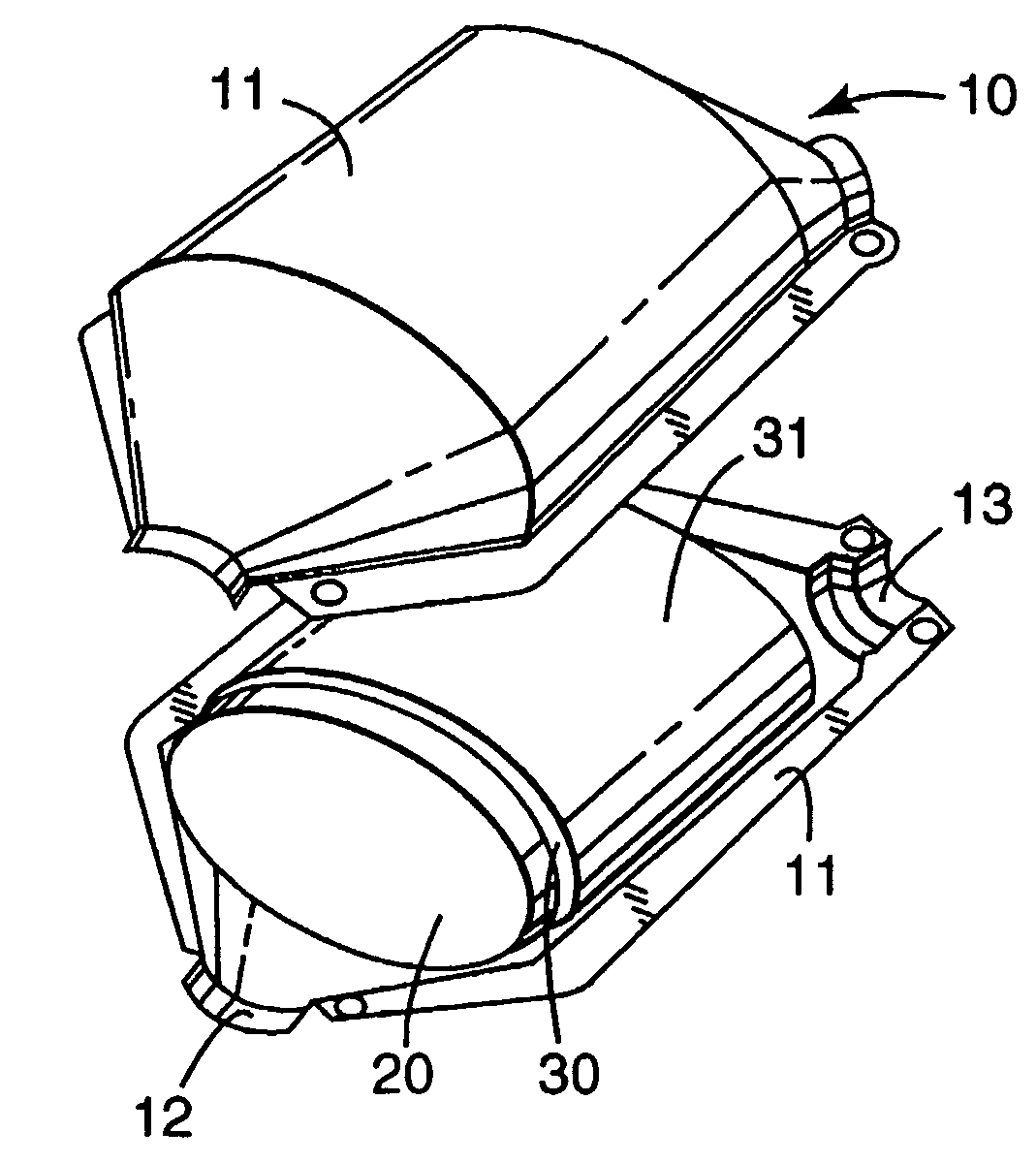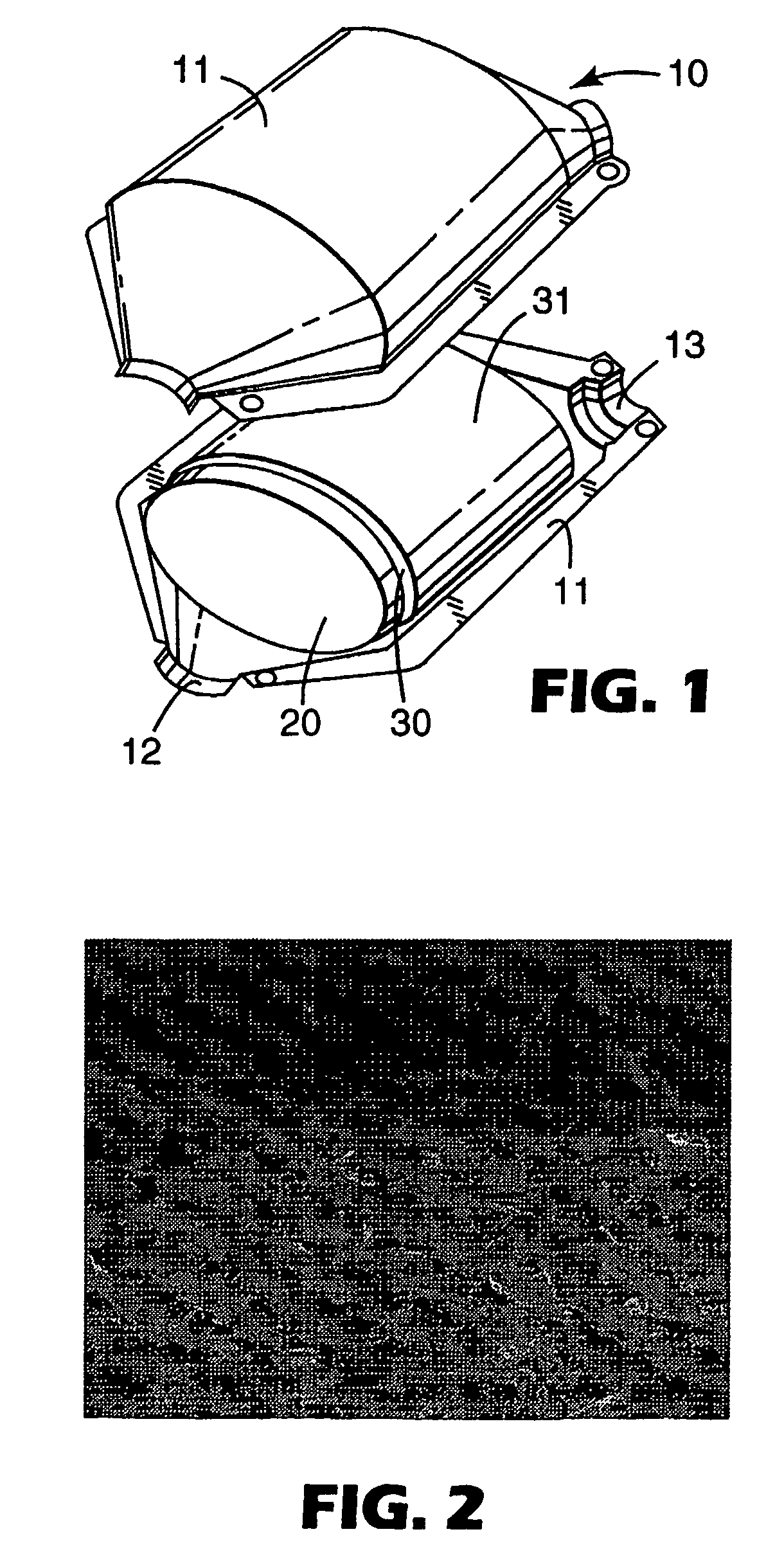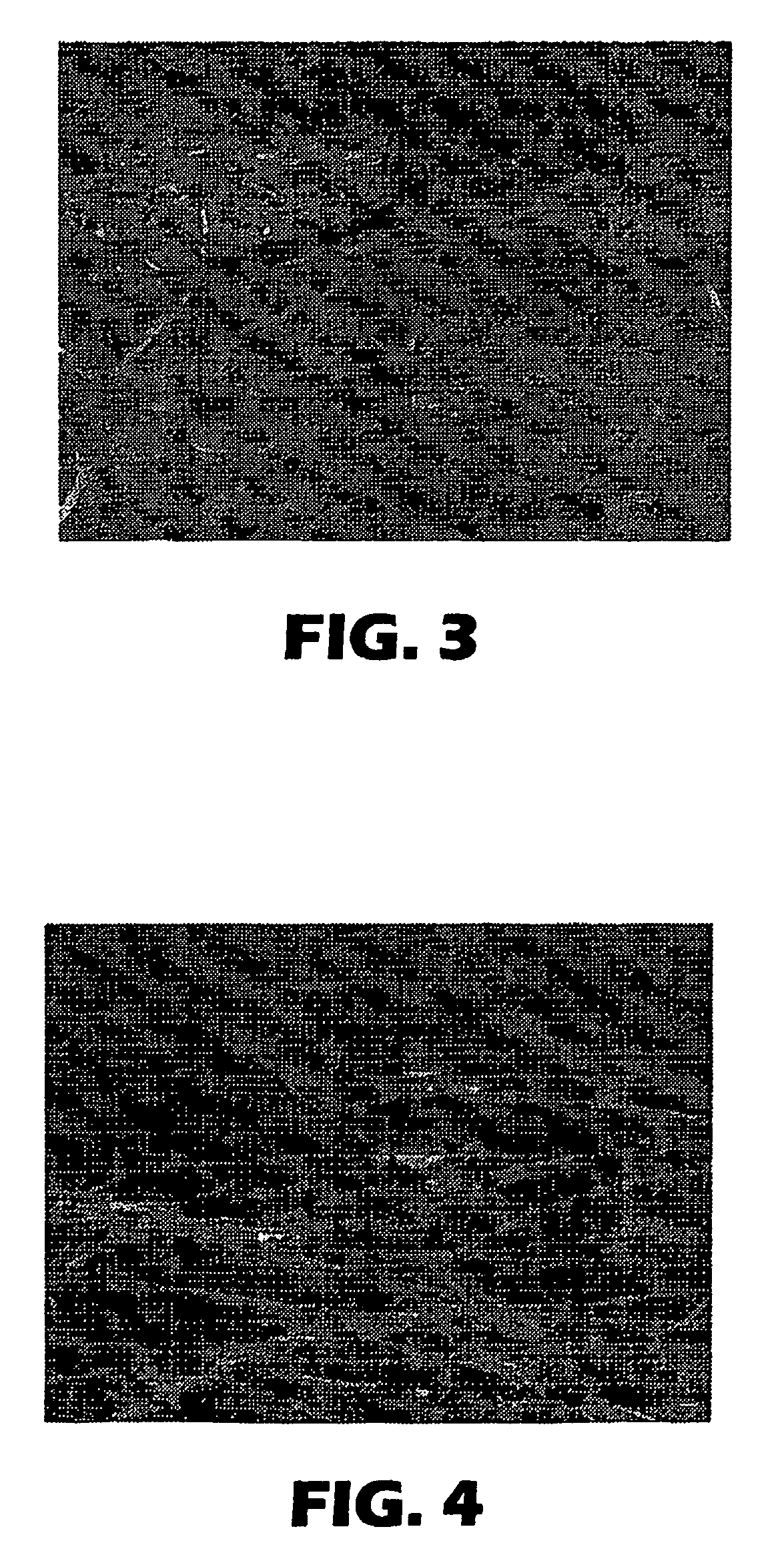Thermal insulating material and pollution control device using the same
- Summary
- Abstract
- Description
- Claims
- Application Information
AI Technical Summary
Benefits of technology
Problems solved by technology
Method used
Image
Examples
example 1
[0078]First, a coating material of polyacrylic acid (manufactured by NIPPON ZEON Co., Ltd. under the trade name of “LX-816”, solid content of 42%) was diluted with water at a dilution degree of 5 time to prepare a coating solution. Both surfaces of a thermal insulating material body (manufactured by MITSUBISHI CHEMICALS Co., Ltd. under the trade name of “MAFTEC BLANKET”) composed mainly of a laminated material of inorganic fibers of crystalline alumina were spray coated with the coating solution. The coating weight of the coating solution was controlled so that the weight of the organic matter containing the coating material is 1% or less based on the total weight. The coating solution was dried to obtain a thermal insulating material.
example 2
[0079]In the same manner as in Example 1, except that both surfaces of the thermal insulating material body were coated with about 0.3 g of a coating solution (manufactured by ODEC Co. under the trade name of “SERACOAT 22-T”) of an aqueous potassium phosphate solution by spraying and then dried, a thermal insulating material was made.
example 3
[0080]In the same manner as in Example 2, except that both surfaces of the thermal insulating material body were coated with about 0.3 g of an aqueous potassium silicate solution and dried, and then further coated with about 0.3 g of a coating solution (manufactured by ODEC Co. under the trade name of “MASTER SEAL”) of an aqueous aluminum phosphate solution by spraying, and then dried, a thermal insulating material was made.
PUM
| Property | Measurement | Unit |
|---|---|---|
| Temperature | aaaaa | aaaaa |
| Temperature | aaaaa | aaaaa |
| Temperature | aaaaa | aaaaa |
Abstract
Description
Claims
Application Information
 Login to View More
Login to View More - R&D
- Intellectual Property
- Life Sciences
- Materials
- Tech Scout
- Unparalleled Data Quality
- Higher Quality Content
- 60% Fewer Hallucinations
Browse by: Latest US Patents, China's latest patents, Technical Efficacy Thesaurus, Application Domain, Technology Topic, Popular Technical Reports.
© 2025 PatSnap. All rights reserved.Legal|Privacy policy|Modern Slavery Act Transparency Statement|Sitemap|About US| Contact US: help@patsnap.com



